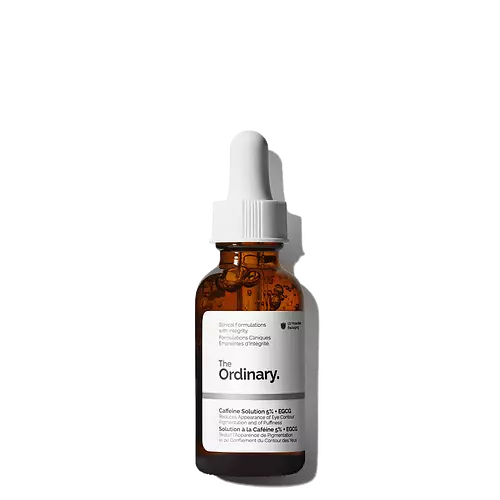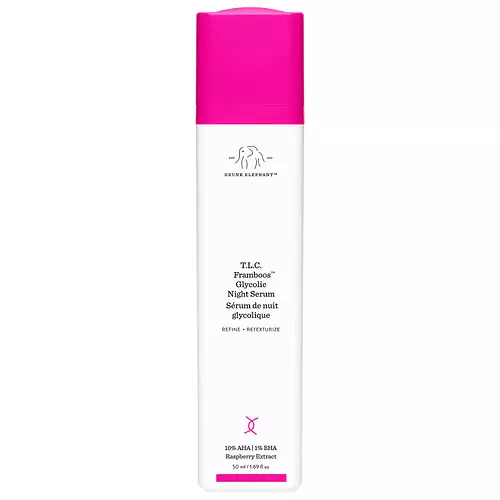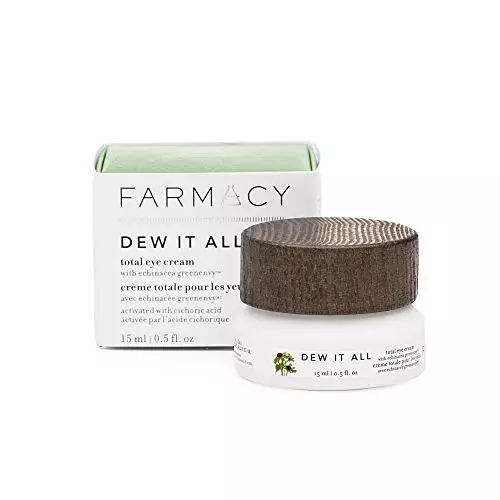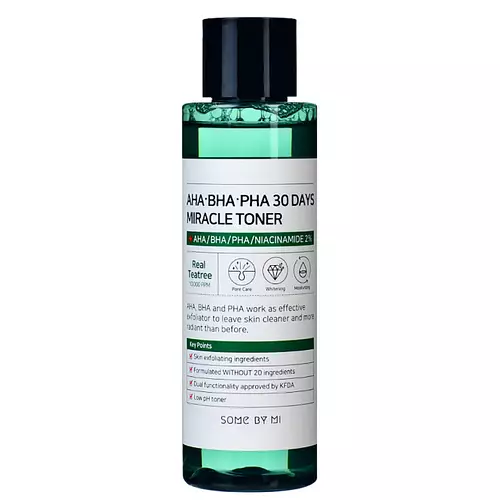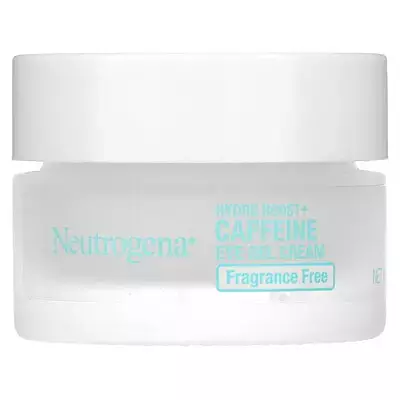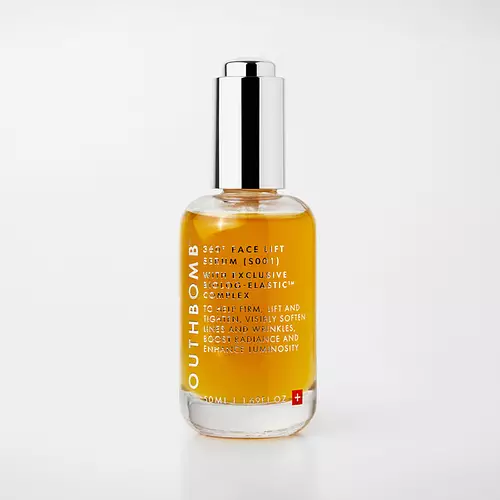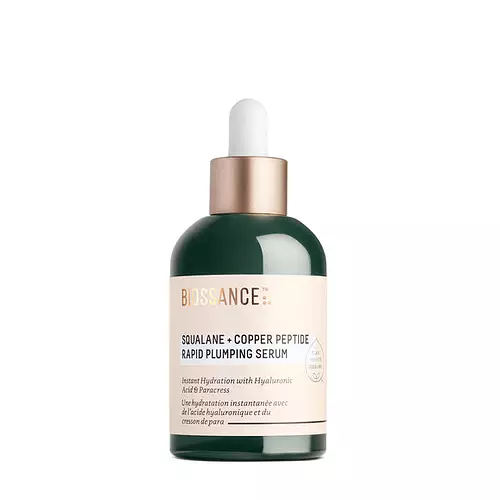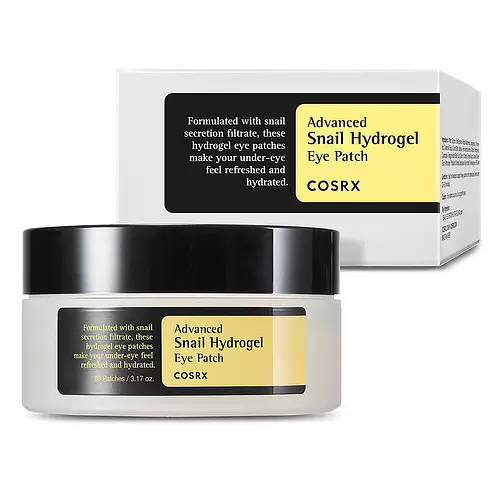The Ordinary Caffeine Solution 5% + EGCG Versus Drunk Elephant T.L.C. Framboos™ Glycolic Resurfacing Night Serum
Updated on May 14, 2024
Overview
What they are
These products are both cruelty-free and reef safe serums. They have a total of 10 ingredients in common
Cool Features
They both contain AHA and hyaluronic acid
Suited For
They're both likely to be good for anti aging, dry skin, brightening skin, reducing pores, scar healing, dark spots and better texture
Free From
They both do not contain any parabens, silicones or sulfates
We independently verify ingredients, and our claims are backed by peer-reviewed research. Spot a product that needs an update? Let us know.
Ingredient Info
The Ordinary Caffeine Solution 5% + EGCG 25 ingredients
Drunk Elephant T.L.C. Framboos™ Glycolic Resurfacing Night Serum 36 ingredients
At a glance
Click on any of the items below to learn more
The Ordinary Caffeine Solution 5% + EGCG 25 ingredients
Drunk Elephant T.L.C. Framboos™ Glycolic Resurfacing Night Serum 36 ingredients
Notable Ingredients
This product contains 1 ingredient that may have this attribute:
This product contains 1 ingredient that may have this attribute:
Benefits
This product contains 1 ingredient that may have this attribute:
This product contains 2 ingredients that may have this attribute:
This product contains 1 ingredient that may have this attribute:
This product contains 2 ingredients that may have this attribute:
This product contains 1 ingredient that may have this attribute:
This product contains 2 ingredients that may have this attribute:
This product contains 3 ingredients that may have this attribute:
Concerns
This product contains 1 ingredient that may have this attribute:
This product contains 1 ingredient that may have this attribute:
This product contains 3 ingredients that may have this attribute:
This product contains 2 ingredients that may have this attribute:
This product contains 2 ingredients that may have this attribute:
Notable Ingredients
This product contains 3 ingredients that may have this attribute:
This product contains 1 ingredient that may have this attribute:
This product contains 1 ingredient that may have this attribute:
Benefits
This product contains 1 ingredient that may have this attribute:
This product contains 2 ingredients that may have this attribute:
This product contains 3 ingredients that may have this attribute:
This product contains 3 ingredients that may have this attribute:
This product contains 3 ingredients that may have this attribute:
This product contains 5 ingredients that may have this attribute:
This product contains 3 ingredients that may have this attribute:
This product contains 2 ingredients that may have this attribute:
This product contains 5 ingredients that may have this attribute:
This product contains 2 ingredients that may have this attribute:
This product contains 5 ingredients that may have this attribute:
Concerns
This product contains 1 ingredient that may have this attribute:
This product contains 4 ingredients that may have this attribute:
This product contains 5 ingredients that may have this attribute:
This product contains 2 ingredients that may have this attribute:
Ingredients Side-by-side
Ingredients Explained
These ingredients are found in both products.
Ingredients higher up in an ingredient list are typically present in a larger amount.
Water. It's the most common cosmetic ingredient of all. You'll usually see it at the top of ingredient lists, meaning that it makes up the largest part of the product.
So why is it so popular? Water most often acts as a solvent - this means that it helps dissolve other ingredients into the formulation.
You'll also recognize water as that liquid we all need to stay alive. If you see this, drink a glass of water. Stay hydrated!
Learn more about WaterGlycerin is already naturally found in your skin. It helps moisturize and protect your skin.
A study from 2016 found glycerin to be more effective as a humectant than AHAs and hyaluronic acid.
As a humectant, it helps the skin stay hydrated by pulling moisture to your skin. The low molecular weight of glycerin allows it to pull moisture into the deeper layers of your skin.
Hydrated skin improves your skin barrier; Your skin barrier helps protect against irritants and bacteria.
Glycerin has also been found to have antimicrobial and antiviral properties. Due to these properties, glycerin is often used in wound and burn treatments.
In cosmetics, glycerin is usually derived from plants such as soybean or palm. However, it can also be sourced from animals, such as tallow or animal fat.
This ingredient is organic, colorless, odorless, and non-toxic.
Glycerin is the name for this ingredient in American English. British English uses Glycerol/Glycerine.
Learn more about GlycerinPropanediol helps absorb ingredients into your skin, boosting their benefits. It can act as an emollient, making your skin softer. Propanediol can help products last longer by boosting the properties of preservatives within the formulation.
Propanediol is not likely to cause sensitivity and considered safe to use.
It is derived from corn or petroleum with a clear color and no scent.
Learn more about PropanediolPentylene glycol is typically used within a product to thicken it. It also adds a smooth, soft, and moisturizing feel to the product. It is naturally found in plants such as sugar beets.
The hydrophilic trait of Pentylene Glycol makes it a humectant. As a humectant, Pentylene Glycol helps draw moisture from the air to your skin. This can help keep your skin hydrated.
This property also makes Pentylene Glycol a great texture enhancer. It can help thicken or emulsify a product. Emulsifiers help stabilize a product. It does this by preventing certain ingredients from separating.
Pentylene Glycol also acts as a mild preservative and helps to keep a product microbe-free.
Some people may experience mild eye and skin irritation from Pentylene Glycol. We always recommend speaking with a professional about using this ingredient in your routine.
Pentylene Glycol has a low molecular weight and is part of the 1,2-glycol family.
Learn more about Pentylene GlycolHydroxyethylcellulose is used to improve the texture of products. It is created from a chemical reaction involving ethylene oxide and alkali-cellulose. Cellulose is a sugar found in plant cell walls and help give plants structure.
Hydroxyethylcellulose helps stabilize products by preventing ingredients from separating. It can also help thicken the texture of a product.
This ingredient can also be found in pill medicines to help our bodies digest other ingredients.
Learn more about HydroxyethylcelluloseXanthan gum is used as a stabilizer and thickener within cosmetic products. It helps give products a sticky, thick feeling - preventing them from being too runny.
On the technical side of things, xanthan gum is a polysaccharide - a combination consisting of multiple sugar molecules bonded together.
Xanthan gum is a pretty common and great ingredient. It is a natural, non-toxic, non-irritating ingredient that is also commonly used in food products.
Learn more about Xanthan GumLactic Acid is an AHA that is derived from fermenting lactose, a carbohydrate from milk. It removes the top layer of old and dead skin cells and helps increase cell turnover.
Benefits of Lactic Acid are that it can help to reduce large pores and reduce the effects of aging. Some potential downsides are that it can be bad for dry skin, cause irritation, worsen eczema, and worsen rosacea.
Not only does it help exfoliate the skin, it helps strengthen the skin's barrier. When applied, lactic acid helps the skin create ceramides.
Lactic acid is an over-the-counter chemical exfoliant that comes from the fermentation of lactose — a carbohydrate found in milk.
Legend has it that Cleopatra used to bathe in sour milk to help reduce wrinkles.
Read more about some other popular AHA's here:
Learn more about Lactic AcidEthylhexylglycerin (we can't pronounce this either) is commonly used as a preservative and skin softener. It is derived from glyceryl.
You might see Ethylhexylglycerin often paired with other preservatives such as phenoxyethanol. Ethylhexylglycerin has been found to increase the effectiveness of these other preservatives.
Phenoxyethanol is a preservative that has germicide, antimicrobial, and aromatic properties. Studies show that phenoxyethanol can prevent microbial growth. By itself, it has a scent that is similar to that of a rose.
It's often used in formulations along with Caprylyl Glycol to preserve the shelf life of products.
Caprylyl Glycol is a humectant and emollient, meaning it attracts and preserves moisture.
It is a common ingredient in many products, especially those designed to hydrate skin. The primary benefits are retaining moisture, skin softening, and promoting a healthy skin barrier.
Though Caprylyl Glycol is an alcohol derived from fatty acids, it is not the kind that can dry out skin.
This ingredient is also used as a preservative to extend the life of products. It has slight antimicrobial properties.
Learn more about Caprylyl GlycolIngredient Ratings
Here's what our community thinks of the ingredients in these products.
When to use
The Ordinary Caffeine Solution 5% + EGCG 25 ingredients
Drunk Elephant T.L.C. Framboos™ Glycolic Resurfacing Night Serum 36 ingredients


Reviews
Here's what our community thinks
The Ordinary Caffeine Solution 5% + EGCG 25 ingredients
🎀
♡︎
- 𝗆𝗈𝗌𝗍 𝗅𝗂𝗄𝖾𝗅𝗒 𝗐𝗈𝗇'𝗍 𝗋𝖾𝗉𝗎𝗋𝖼𝗁𝖺𝗌𝖾, 𝗀𝗈𝗍 𝗍𝗐𝗈 𝗂𝗇 𝖺 𝗉𝖺𝖼𝗄 𝗌𝗈 𝗃𝗎𝗌𝗍 𝖿𝗂𝗇𝗂𝗌𝗁𝗂𝗇𝗀 𝗍𝗁𝖾𝗆 𝗎𝗉
- 𝗁𝗈𝗇𝖾𝗌𝗍𝗅𝗒 𝗍𝗁𝗂𝗌 𝖽𝗈𝖾𝗌 𝗇𝗈𝗍 𝗐𝗈𝗋𝗄 𝖺𝗍 𝖺𝗅𝗅 𝖻𝗎𝗍 𝖨'𝗏𝖾 𝖻𝖾𝖾𝗇 𝗅𝗒𝗂𝗇𝗀 𝗍𝗈 𝗆𝗒𝗌𝖾𝗅𝖿...
♡︎
- 𝗆𝗈𝗌𝗍 𝗅𝗂𝗄𝖾𝗅𝗒 𝗐𝗈𝗇'𝗍 𝗋𝖾𝗉𝗎𝗋𝖼𝗁𝖺𝗌𝖾, 𝗀𝗈𝗍 𝗍𝗐𝗈 𝗂𝗇 𝖺 𝗉𝖺𝖼𝗄 𝗌𝗈 𝗃𝗎𝗌𝗍 𝖿𝗂𝗇𝗂𝗌𝗁𝗂𝗇𝗀 𝗍𝗁𝖾𝗆 𝗎𝗉
- 𝗁𝗈𝗇𝖾𝗌𝗍𝗅𝗒 𝗍𝗁𝗂𝗌 𝖽𝗈𝖾𝗌 𝗇𝗈𝗍 𝗐𝗈𝗋𝗄 𝖺𝗍 𝖺𝗅𝗅 𝖻𝗎𝗍 𝖨'𝗏𝖾 𝖻𝖾𝖾𝗇 𝗅𝗒𝗂𝗇𝗀 𝗍𝗈 𝗆𝗒𝗌𝖾𝗅𝖿 𝖺𝗇𝖽 𝗌𝖺𝗒𝗂𝗇𝗀 𝗍𝗁𝖺𝗍 𝗂𝗍 𝖽𝗈𝖾𝗌
- 𝖽𝗈𝖾𝗌𝗇'𝗍 𝖽𝗈 𝖺𝗇𝗒𝗍𝗁𝗂𝗇𝗀 𝖺𝗍 𝖺𝗅𝗅 𝖿𝗈𝗋 𝗎𝗇𝖽𝖾𝗋 𝗆𝗒 𝖾𝗒𝖾𝗌
- 𝖨 𝖽𝗈 𝖺𝗉𝗉𝗅𝗒 𝗂𝗍 𝗈𝖿𝗍𝖾𝗇 𝗃𝗎𝗌𝗍 𝗌𝗈 𝖨 𝖼𝖺𝗇 𝖿𝖾𝖾𝗅 𝖿𝖺𝗇𝖼𝗒 𝖺𝗇𝖽 𝖼𝖺𝗇 𝖿𝗂𝗇𝗂𝗌𝗁 𝗈𝗎𝗍 𝗆𝗒 𝖻𝗈𝗍𝗍𝗅𝖾𝗌
- 𝗐𝗈𝗎𝗅𝖽𝗇'𝗍 𝗋𝖾𝖼𝗈𝗆𝗆𝖾𝗇𝖽
Drunk Elephant T.L.C. Framboos™ Glycolic Resurfacing Night Serum 36 ingredients
KyleighWallace_646
Got this as a freebie/trial with the F Balm Hydrofacial moisturizer (which is amazing) so I decided I would try it on my nose / chin and a little...
Got this as a freebie/trial with the F Balm Hydrofacial moisturizer (which is amazing) so I decided I would try it on my nose / chin and a little bit of t zone because I have lots of sebaceous filaments, blackheads and huge pores . Horrible idea for my sensitive skin. I only used it ONLY in those spots, as the ONLY exfoliating product in the routine, and ONLY 1x a week. Every time I used it even with LOADS of ultra hydrating products to counterbalance it it stung my skin so bad, and the next morning I would wake up with juicy inflamed pimples on my nose / only on spots Where I had applied it. I did notice my pores looked a little smaller maybe and sebaceous filaments were less prominent but it was NOT worth it for the inflamed acne it caused. Idk if it’s a specific ingredient or if this stuff is just incredibly harsh but if your skin is sensitive at all avoid this stuff like the plague. Even strategic use can’t be achieved.
